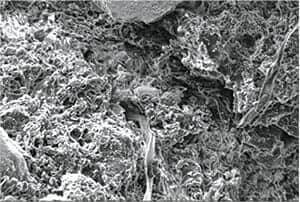
Industrial stormwater can contain trace metals above regulatory limits. Although standard water treatment processes are available to treat this water, they are generally expensive and require more maintenance than small companies can afford. Lower-cost, lower-maintenance alternatives are needed.
Peat is a natural material and has long been known for its ability to remove metals from water. At least five different mechanisms on the peat surface are involved in metal removal (Brown, et al. 2000). Various studies have evaluated the ability of peat to remove metals, and copper concentrations up to 8.9% have been reported in samples used to treat wastewater (Lapakko and Eger 1988, Premi 1970).
Peat, although relatively inexpensive, tends to be non-uniform and somewhat difficult to handle. Although loose, fibrous peat can have […]
Full article: Removing Trace Metals From Stormwater at an Industrial Hard Chrome Plating Facility
More about water treatment and chemical contaminants:
Understanding chemical byproducts formed during water treatment
Anxiety drugs are getting into the water we drink. This is how we could stop them.
U.S. Steel dumps more toxic chromium near Lake Michigan, faces lawsuit
Pennsylvania watershed contaminated with radioactive material and endocrine-disrupting chemicals


